New Britain is an island in Papua New Guinea, located in the southwestern Pacific Ocean. Known for its vibrant cultures and picturesque landscapes, this island is also home to an incredible diversity of bird species.
As one of the largest islands in the country, New Britain boasts a remarkable array of avian creatures, from brightly colored parrots and kingfishers to majestic birds of prey.
In this article, we will introduce you to some of the most fascinating birds found in New Britain, highlighting their unique characteristics and contributions to the island’s ecosystem.
1. Black Honey Buzzard
The Black Honey-Buzzard is a large raptor of the Accipitridae family, standing at around 50 cm tall. It has an impressive black body with striking white bands on its tail and flight feathers which makes it quite easy to spot when flying.
Its wings are noticeably long compared to other birds of prey, making it stand out in the sky.
The diet consists mainly of insects such as bees, wasps and ants that they catch by swooping down from high above or hovering over them while searching for food below.
They also occasionally consume small reptiles, amphibians and rodents too.
This bird can be found across parts of New Britain Island where there is plenty enough space for these beautiful creatures to soar freely through their natural habitat.Scientific classification:
| Kingdom | Animalia |
| Phylum | Chordata |
| Class | Aves |
| Order | Accipitriformes |
| Family | Accipitridae |
| Genus | Henicopernis |
| Species | H. infuscatus |
Also Featured In: Papua New Guinea birds,
2. Pink-Legged Rail
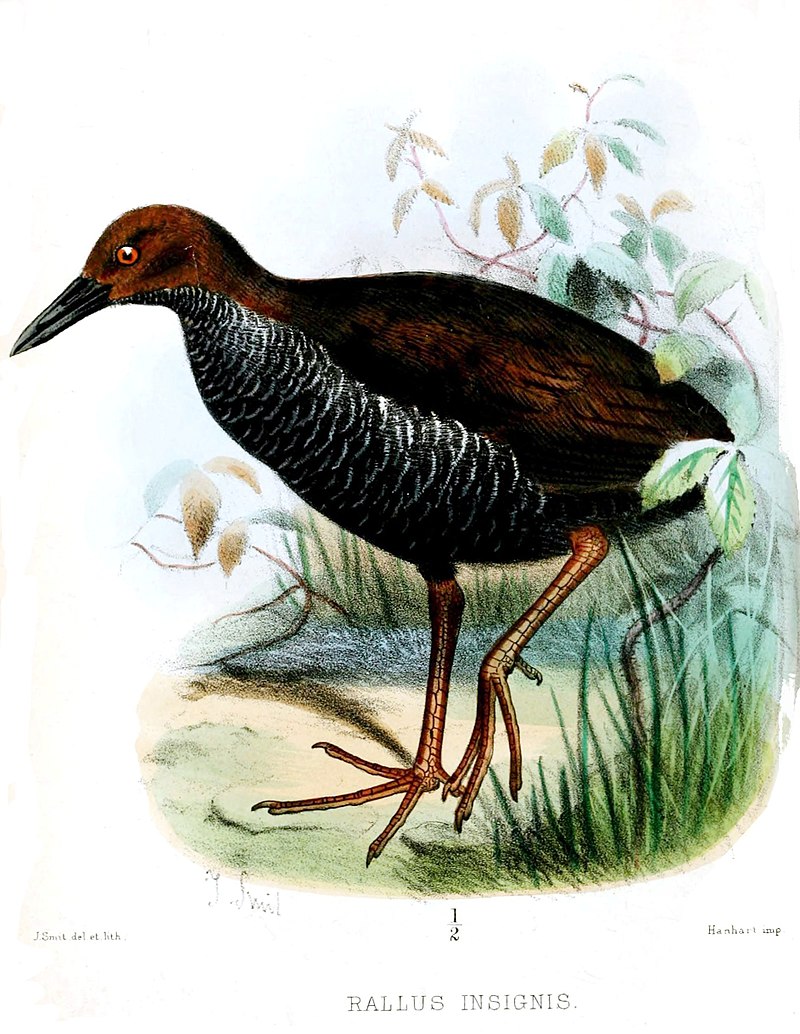
The Pink-legged rail bird, also called the New Britain rail, belongs to the Rallidae family. Found only on the island of New Britain, it has distinctive pink-colored legs.
It is usually seen in subtropical or tropical moist lowland and montane forests. Its natural habitat is being rapidly destroyed, leading to its threatened status.
Due to its limited range and declining population, the conservation of this bird species is essential.
It is a unique and remarkable bird that adds to the biodiversity of New Britain’s rich flora and fauna. The Pink-legged rail deserves better protection, and conservation efforts should be put in place to ensure its continued survival.
Its pink legs make it particularly intriguing, and seeing it in the wild is an experience that few are fortunate enough to have.Scientific classification:
| Kingdom | Animalia |
| Phylum | Chordata |
| Class | Aves |
| Order | Gruiformes |
| Family | Rallidae |
| Genus | Hypotaenidia |
| Species | H. insignis |
3. New Britain Sparrowhawk
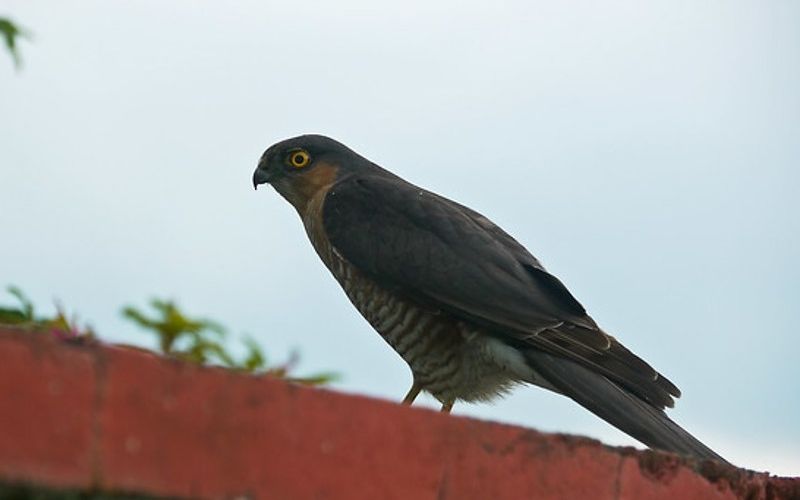
The New Britain sparrowhawk is a threatened species that inhabits only two islands of Papua New Guinea – New Britain and New Ireland. This bird of prey was first discovered during the Whitney South Sea Expedition in 1934 by Ernst Mayr, who noted its rarity.
The New Britain sparrowhawk has a grey body with a white underbelly, and its unique orange accents make it easily distinguishable. Due to its endangered status, conservation efforts are being made to protect their habitat and population.
This species plays a crucial role in maintaining ecological balance in its habitat, and the loss of the New Britain sparrowhawk could have disastrous consequences for the environment.
It is imperative that we continue to learn about this species and take steps to ensure its survival.Scientific classification:
| Kingdom | Animalia |
| Phylum | Chordata |
| Class | Aves |
| Order | Accipitriformes |
| Family | Accipitridae |
| Genus | Accipiter |
| Species | A. brachyurus |
4. Golden Masked Owl
The Golden masked owl, also known as Tyto aurantia, is a rare bird species that is native to the island of New Britain in Papua New Guinea. As a tropical barn owl, it is difficult to spot in the wild and remains poorly studied.
This elusive bird is most likely found in lowland forests or coniferous areas. Despite its scarcity, the Golden masked owl is also referred to as the New Britain barn owl, New Britain masked owl, Bismarck owl, and Bismarck masked owl.
With little reliable information available, this fascinating creature remains shrouded in mystery, leaving much to be discovered about its habits and lifestyle.Scientific classification:
| Kingdom | Animalia |
| Phylum | Chordata |
| Class | Aves |
| Order | Strigiformes |
| Family | Tytonidae |
| Genus | Tyto |
| Species | T. aurantia |
5. New Britain Boobook
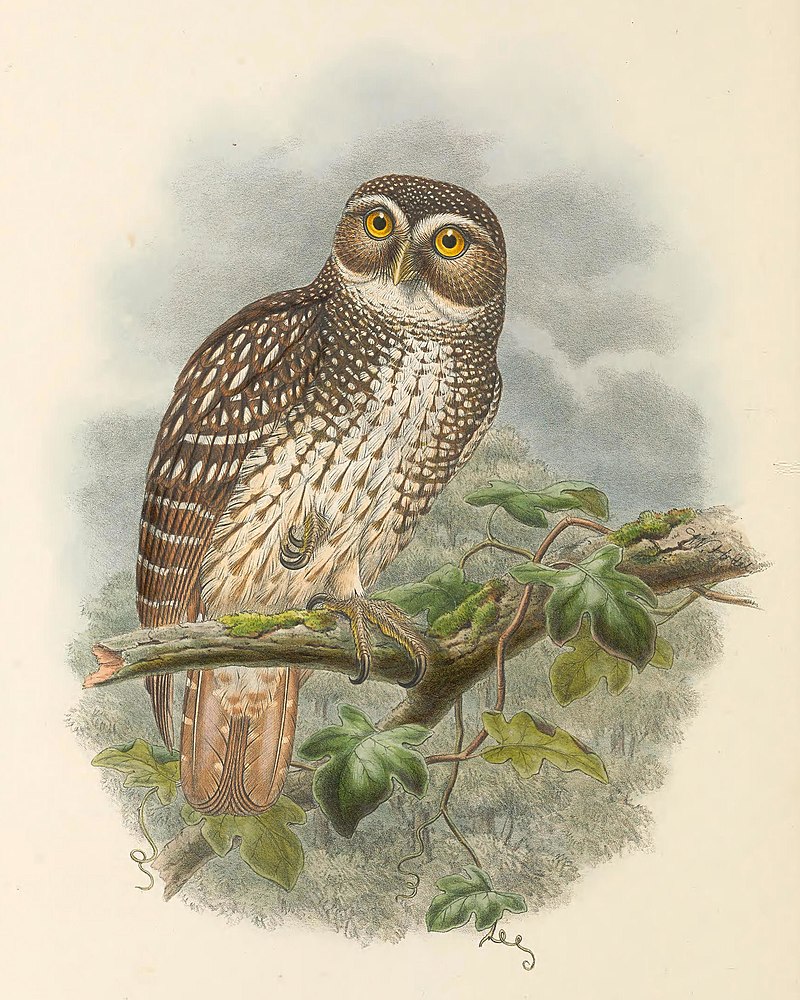
The New Britain boobook, also called the spangled boobook, is a small owl that only lives on the island of New Britain in Papua New Guinea.
Measuring about 22 cm in length, it has beautiful chocolate-brown feathers that are covered in fine spots.
Its striking golden eyes and distinct white eyebrows help it stand out in the dark of night.
Endemic to this specific region, this particular species has adapted to the habitat of New Britain and is a unique and important part of the island’s biodiversity.
Given its limited range of distribution, conservation efforts are critical to ensuring the future of this fascinating bird.Scientific classification:
| Kingdom | Animalia |
| Phylum | Chordata |
| Class | Aves |
| Order | Strigiformes |
| Family | Strigidae |
| Genus | Ninox |
| Species | N. odiosa |
6. Black-Bellied Myzomela
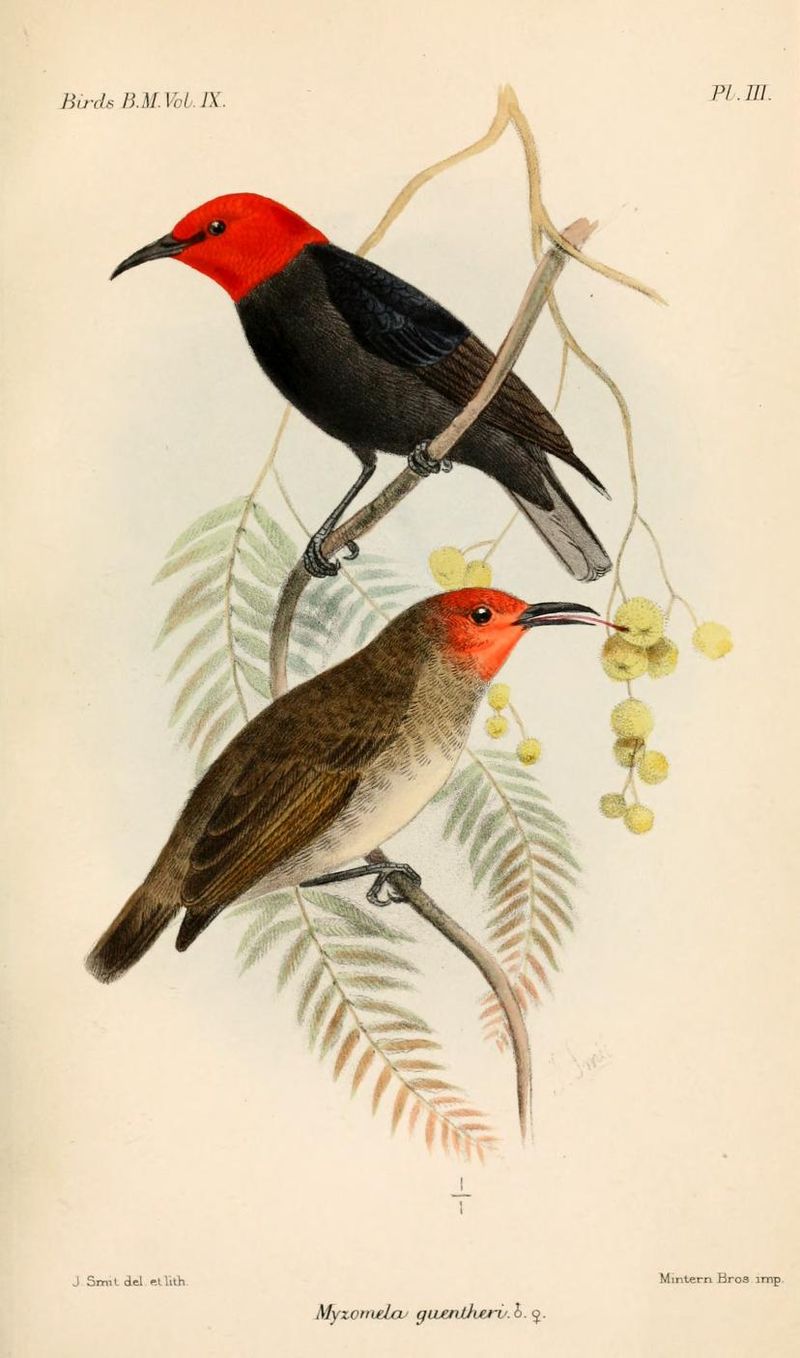
The Black-bellied myzomela bird, also known as the splendid myzomela, is a species belonging to the Meliphagidae family. Found only on the New Britain island near New Guinea, this bird lives in subtropical or tropical moist forests.
The adult bird can grow up to 9-10cm in size while males weigh around 7-9g and females weigh 6.5-7.5g. The males boast predominantly black plumage complemented with red eyes to create a striking appearance.
The black-bellied myzomela bird is quite territorial, defending its nesting area against other birds.
It feeds on nectar, insects and spiders. With its fluttery movements and swift flights, the bird is fascinating to observe in its natural habitat.
Threats to the black-bellied myzomela include habitat loss and limited distribution area. Conserving its habitat is crucial for the survival of this beautiful bird.Scientific classification:
| Kingdom | Animalia |
| Phylum | Chordata |
| Class | Aves |
| Order | Passeriformes |
| Family | Meliphagidae |
| Genus | Myzomela |
| Species | M. erythromelas |
7. New Britain Goshawk
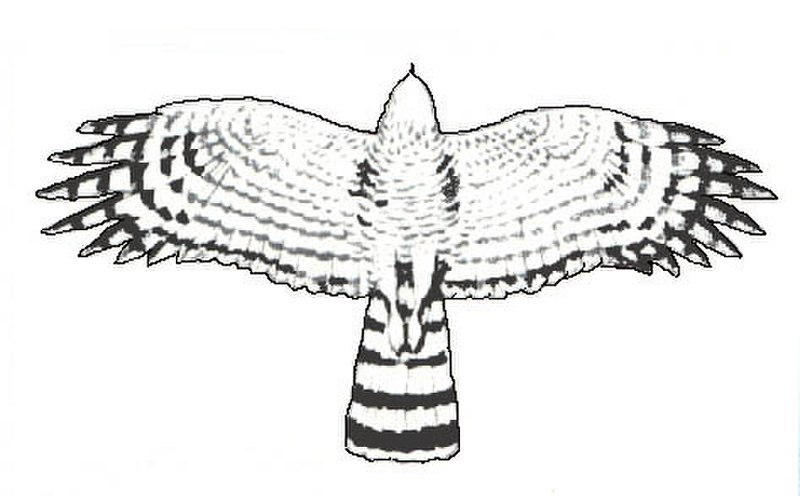
The New Britain goshawk is a bird species found only in Papua New Guinea. It primarily inhabits moist lowland forests and montane forests. Unfortunately, its habitat is continuously threatened by loss due to human activities.
These birds of prey were previously classified as Near Threatened, as their population was believed to be larger.
However, recent findings suggest that they may be rarer than initially thought. The New Britain goshawk belongs to the Accipitridae family and is an endemic species of Papua New Guinea.Scientific classification:
| Kingdom | Animalia |
| Phylum | Chordata |
| Class | Aves |
| Order | Accipitriformes |
| Family | Accipitridae |
| Genus | Accipiter |
| Species | A. princeps |
8. Hooded Mannikin
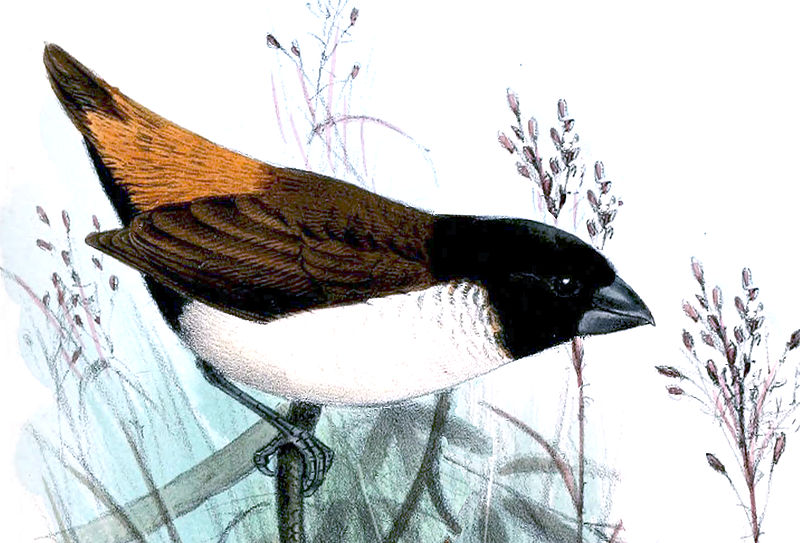
The Hooded mannikin is a tiny bird belonging to the estrildid finch family. This species is found in New Britain and New Guinea. It is also known as the New Britain mannikin or Sclater’s mannikin.
The bird gets its name from the hood-shaped black feathers on its head. The Hooded mannikin has a white underside and brown upper body, while its rump is a bright golden or orange color. It is easily distinguished from other birds in its range.
The juveniles have a similar appearance to the adults. Despite its petite size, the Hooded mannikin is a fascinating bird and a prized sighting for birdwatchers.Scientific classification:
| Kingdom | Animalia |
| Phylum | Chordata |
| Class | Aves |
| Order | Passeriformes |
| Family | Estrildidae |
| Genus | Lonchura |
| Species | L. spectabilis |
9. Red Myzomela
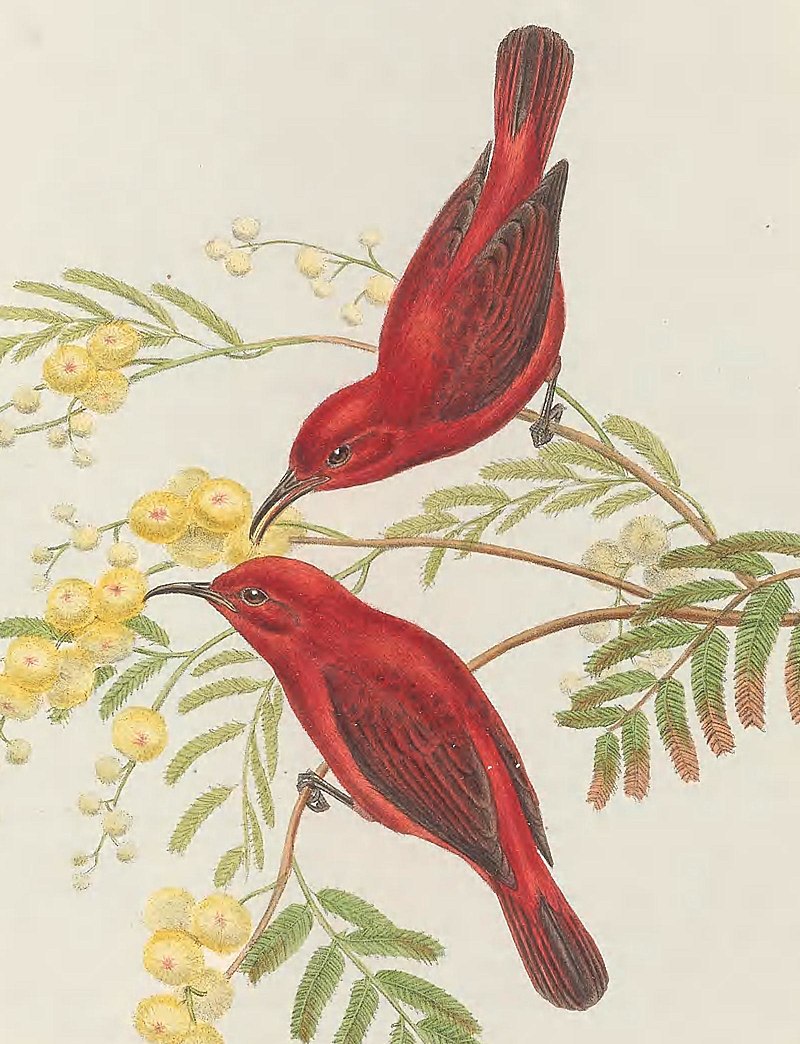
The Red Myzomela is a bird that can be found in New Guinea and New Britain. It prefers to reside in subtropical or tropical moist lowland and montane forests.
This species is a member of the Meliphagidae family. The Red Myzomela has a distinct reddish color that sets it apart from other similar bird species.
Interestingly, the Reddish Myzomela found in New Ireland was once thought to be the same species, but recent studies have proven them to be different.
Overall, this bird is a unique species that can be found living in the lush forests of Papua New Guinea.Scientific classification:
| Kingdom | Animalia |
| Phylum | Chordata |
| Class | Aves |
| Order | Passeriformes |
| Family | Meliphagidae |
| Genus | Myzomela |
| Species | M. cruentata |
10. New Britain Friarbird
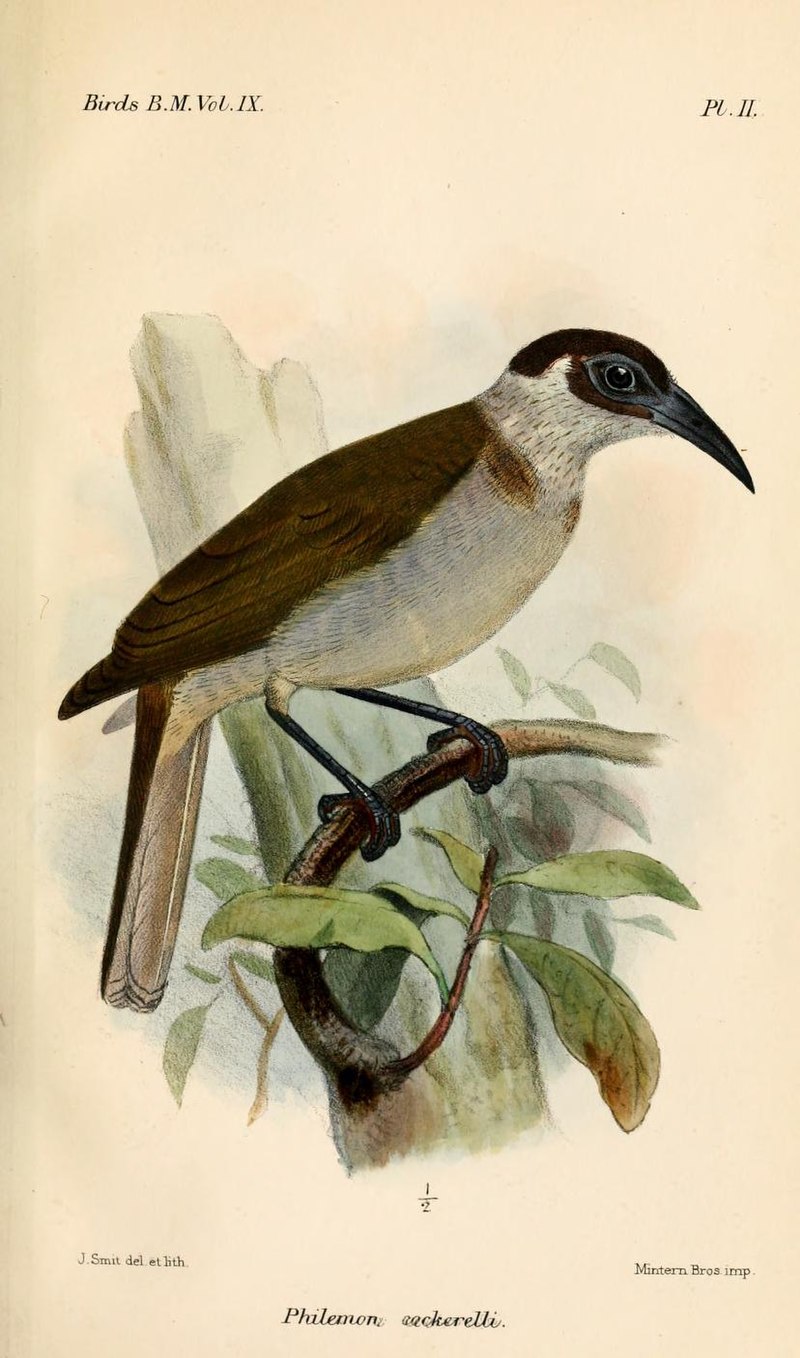
The New Britain friarbird, a Meliphagidae family member, is a Papua New Guinea native. This bird species resides in forests, including subtropical or tropical moist lowland and montane forests.
Its natural habitats provide suitable conditions for the bird’s survival. The New Britain friarbird is an endemic species, meaning it is unique to Papua New Guinea. This bird adds to the diversity of the country’s avifauna.
Its physical features and behavior are of interest to bird enthusiasts and researchers. The bird’s distinctive traits include its unique calls, wingspan, and feeding habits. The New Britain friarbird plays a vital role in the ecological balance of the forest.
Therefore, it is essential to conserve its natural habitats, and efforts must be made to protect this bird species.Scientific classification:
| Kingdom | Animalia |
| Phylum | Chordata |
| Class | Aves |
| Order | Passeriformes |
| Family | Meliphagidae |
| Genus | Philemon |
| Species | P. cockerelli |
11. Bismarck Fantail
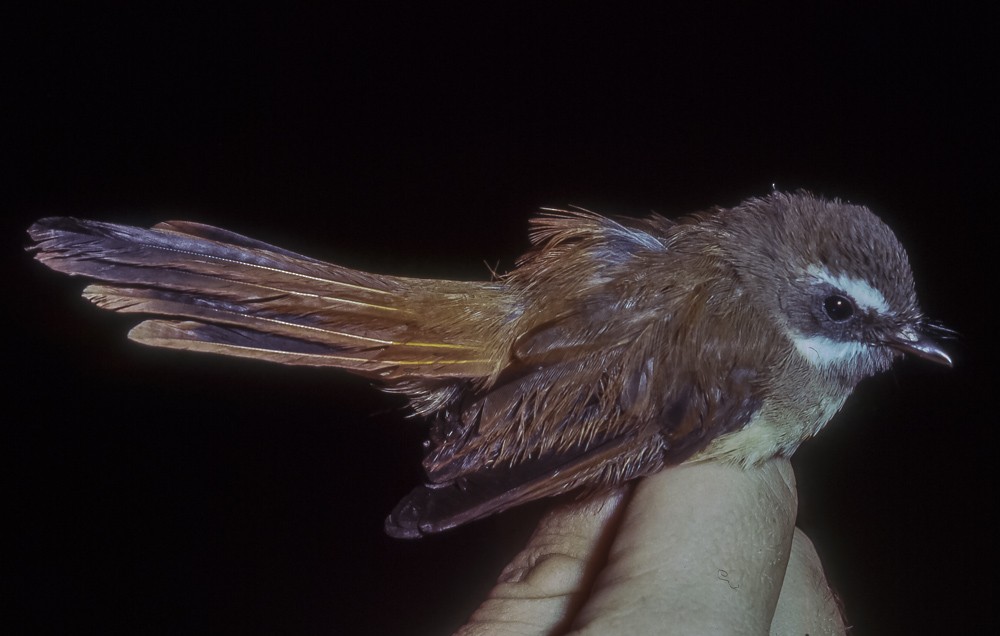
The Bismarck fantail bird is a species of fantail that can be found in the islands of New Britain and New Ireland. It was named after Friedrich Dahl, a German naturalist.
This bird has two recognized subspecies, as per the IOC. This particular bird species is identifiable by its distinctive fantail, which sets it apart from other species. Its fascinating features and unique behavior make it a favorite among bird enthusiasts.
Despite its popularity, not much is known about the Bismarck fantail, and further research is required to delve into its species-specific attributes.
However, it is a delightful sight to see in its natural habitat, and its striking appearance is indeed a treat to behold.Scientific classification:
| Kingdom | Animalia |
| Phylum | Chordata |
| Class | Aves |
| Order | Passeriformes |
| Family | Rhipiduridae |
| Genus | Rhipidura |
| Species | R. dahli |
12. Red-Chinned Lorikeet
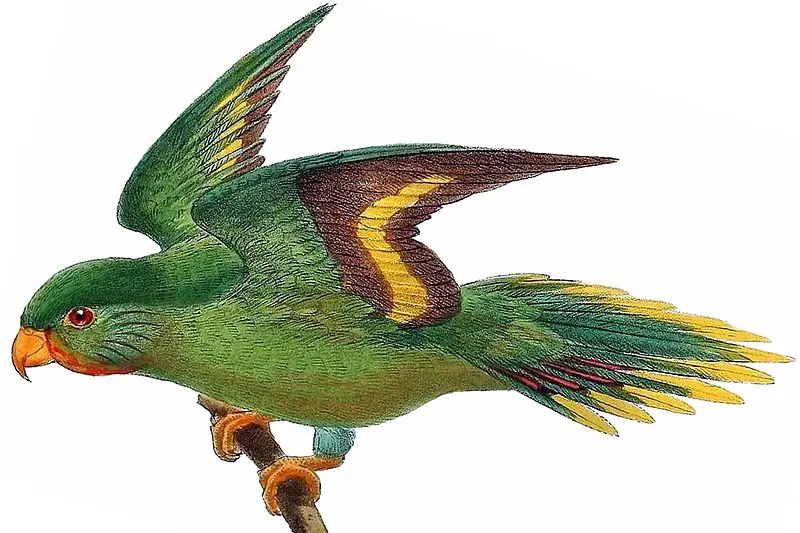
The Red-chinned lorikeet is a parrot species that belongs to the Psittaculidae family. It is endemic to several islands in Papua New Guinea, namely New Britain, New Ireland, New Hannover, and Karkar Island.
These birds thrive in subtropical or tropical moist lowland and montane forests. Formerly a member of the Charmosyna genus, it was eventually reclassified under Vi. Known for their vibrant color, these lorikeets sport a striking red chin.
They have a unique diet among parrots, feeding mainly on nectar, pollen, and fruit.
In captivity, they require a varied diet that includes commercial nectar mix, fresh fruits, and vegetables. These birds are active and intelligent, often displaying playful behavior.
However, their wild population is threatened due to habitat loss and hunting for the pet trade. Conservation efforts are currently underway to protect and preserve these beautiful birds.Scientific classification:
| Kingdom | Animalia |
| Phylum | Chordata |
| Class | Aves |
| Order | Psittaciformes |
| Family | Psittaculidae |
| Genus | Vini |
| Species | V. rubrigularis |
13. Buff-Bellied Mannikin
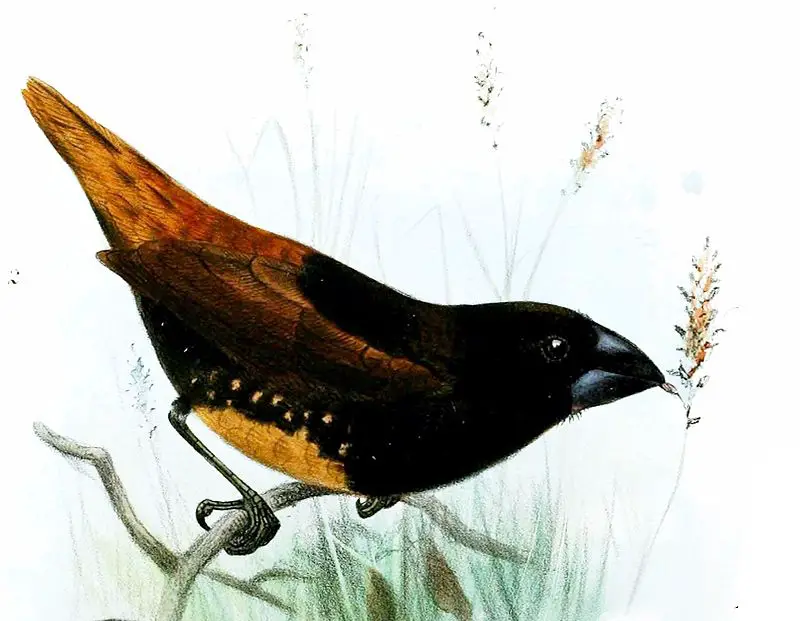
The buff-bellied mannikin, also known as the sooty munia or Bismarck munia, is a small bird of the finch family. It can be found in New Britain and Buka Island in subtropical and tropical dry grasslands.
Though its global extent of occurrence is estimated to be between 20,000 to 50,000 km2, its status is considered Least Concern. The bird’s distinguishing feature is its buff-colored belly, while the rest of its body is a dark brownish-grey.
The buff-bellied mannikin feeds mainly on grass seeds and insects. The species is not a popular pet, unlike some of its finch family counterparts, and is not commonly known in the pet trade.
Despite its lesser-known status, it remains a fascinating bird species to observe in the wild.Scientific classification:
| Kingdom | Animalia |
| Phylum | Chordata |
| Class | Aves |
| Order | Passeriformes |
| Family | Estrildidae |
| Genus | Lonchura |
| Species | L. melaena |